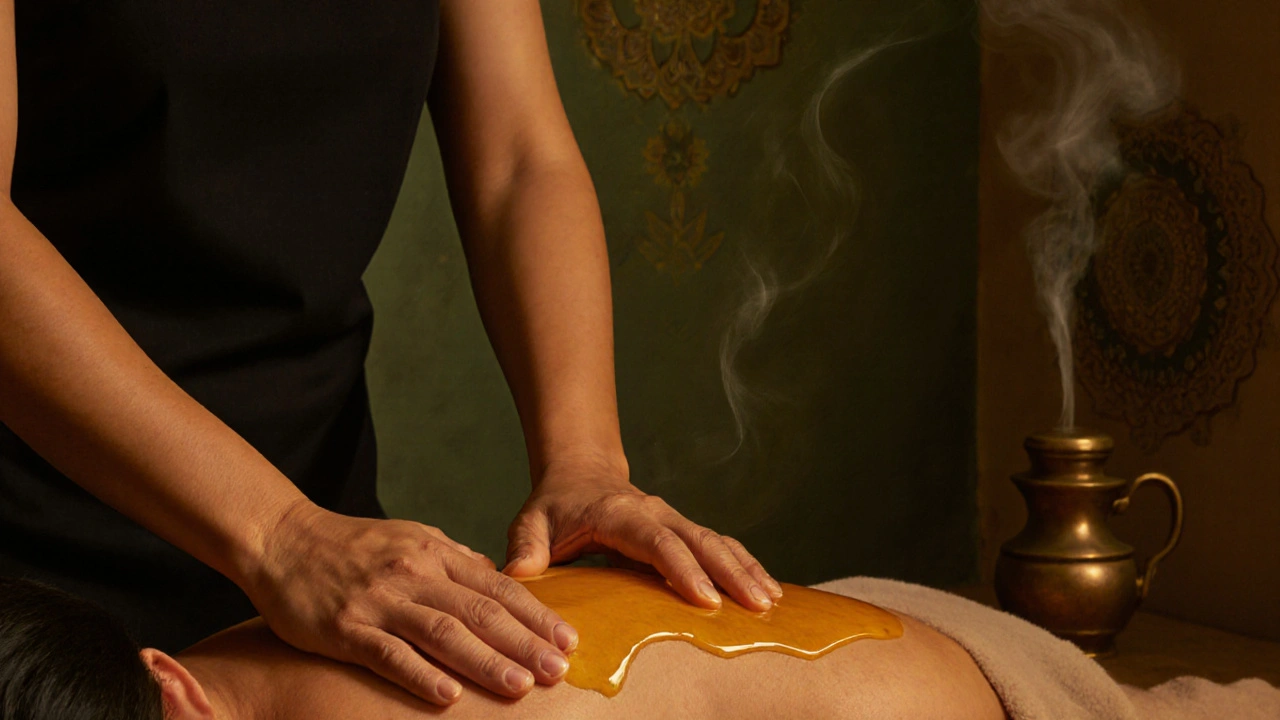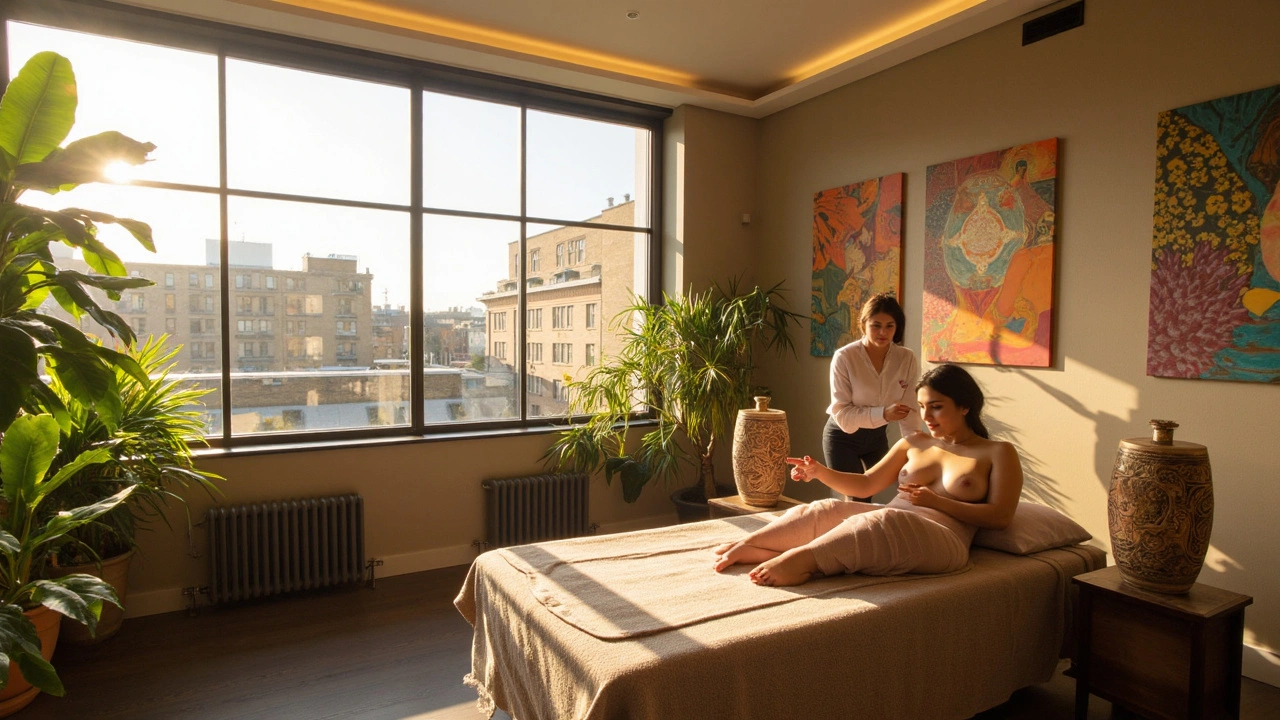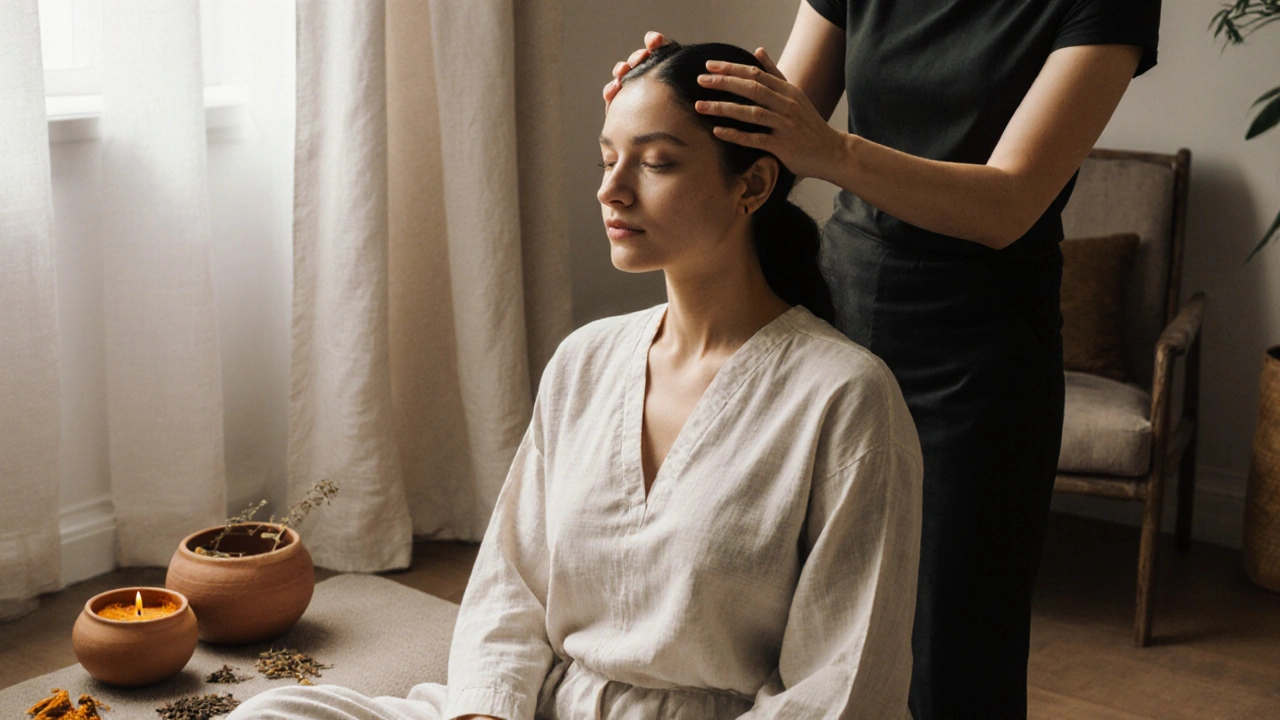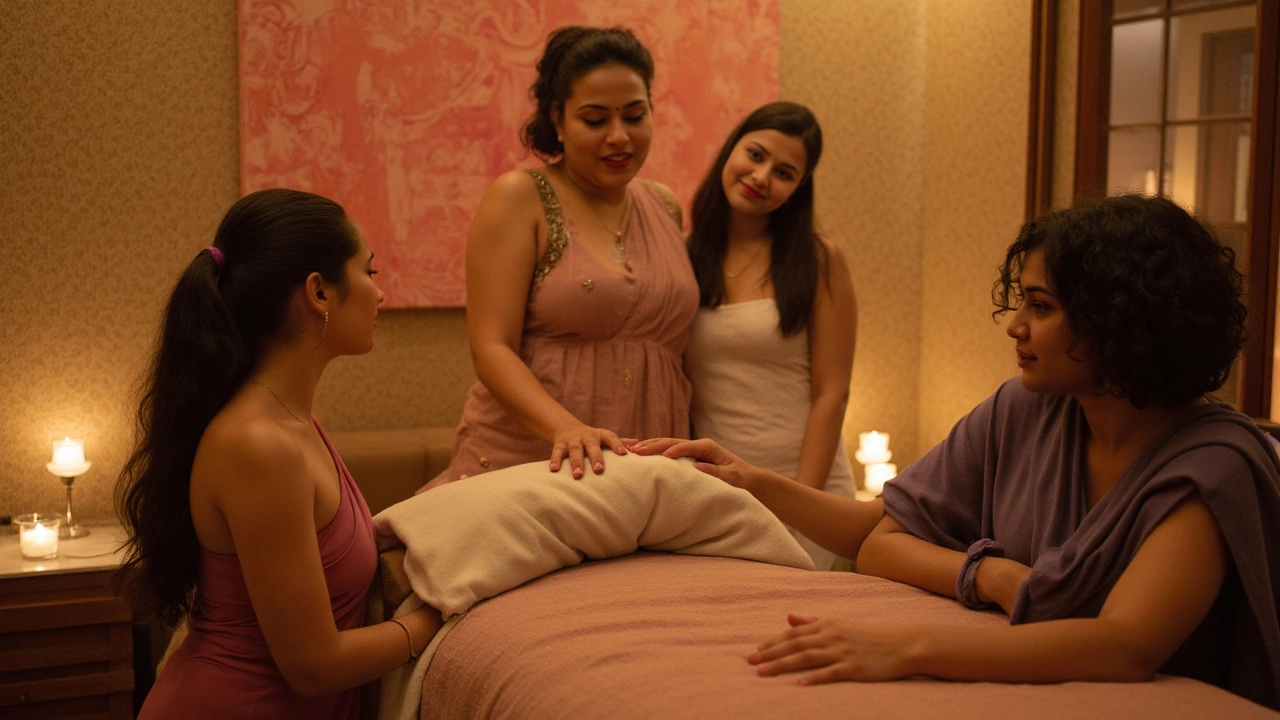The Holistic Benefits of Indian Massage in London

When you think of massage in London, you might picture a quiet spa room with soft music and lavender oil. But there’s another tradition quietly thriving in backstreets and hidden studios across the city - Indian massage. Not just a relaxation technique, it’s a 5,000-year-old healing system rooted in Ayurveda, designed to balance body, mind, and energy. And in London, it’s no longer a niche service for expats. More locals are turning to it for chronic pain, stress relief, and deep restoration - not because it’s trendy, but because it works.
What Makes Indian Massage Different?
Indian massage isn’t one thing. It’s a family of techniques, each with its own rhythm and purpose. The most common in London is Indian head massage, often called Champi. It focuses on the scalp, neck, shoulders, and face - areas where tension hides. But there’s also full-body Ayurvedic massage, using warm herbal oils like sesame, coconut, or mustard, applied with firm, rhythmic strokes. Unlike Swedish massage, which glides, Indian massage presses, compresses, and rotates. It’s not gentle. It’s intentional.
The difference isn’t just technique. It’s philosophy. Indian massage doesn’t treat symptoms. It treats imbalance. In Ayurveda, health comes from the harmony of three doshas - Vata, Pitta, and Kapha. When Vata (air and space) gets stuck, you feel anxious or stiff. When Pitta (fire and water) flares, you get inflammation or irritability. A skilled Indian massage therapist doesn’t just rub your shoulders. They read your posture, your breath, even your skin tone - and adjust the oil, pressure, and rhythm accordingly.
Why It’s Gaining Ground in London
Londoners are tired of quick fixes. They’ve tried deep tissue for tight shoulders. They’ve done yoga for stress. They’ve bought expensive essential oils. But when the tension keeps coming back, they start looking for something deeper. That’s where Indian massage steps in.
Studies from the Journal of Ayurveda and Integrative Medicine show that regular Indian head massage reduces cortisol levels by up to 30% in just four weeks. Another trial in Mumbai found participants with chronic neck pain saw a 65% improvement after six weekly sessions using Ayurvedic oil massage. These aren’t outliers. They’re repeatable results.
In London, clinics in Camden, Brixton, and Southall report a 40% increase in bookings over the last two years. Most clients aren’t Indian. They’re teachers, nurses, software developers - people who sit at desks all day, who wake up with headaches, who can’t remember the last time they slept through the night. They come for relief. They stay because they feel different - calmer, lighter, more present.
The Real Benefits You Can Feel
Let’s break it down. What actually changes after a session?
- Headaches and migraines - The scalp has over 100 pressure points connected to the brain. Stimulating them with warm oil and circular motions can reduce frequency and intensity. One London client, a graphic designer, went from 3 migraines a week to 1 every 3 weeks after 8 sessions.
- Insomnia - Indian massage triggers the parasympathetic nervous system. That’s the body’s ‘rest and digest’ mode. The slow, rhythmic pressure tells your brain: ‘You’re safe.’ Sleep quality improves within days.
- Stiff neck and shoulders - Unlike deep tissue, which digs into muscle, Indian massage works through fascia and energy channels. It releases knots without bruising. Many clients say it feels like their muscles finally ‘remember’ how to relax.
- Hair and scalp health - The oils nourish follicles. Regular head massage increases blood flow to the scalp. In one small study of 45 Londoners with thinning hair, 72% saw reduced shedding after 12 weeks.
- Mental clarity - The combination of touch, warmth, and scent (herbs like rosemary, neem, or ashwagandha in the oils) clears mental fog. People report better focus at work and fewer emotional spikes.
These aren’t vague promises. They’re outcomes documented by clients and practitioners in London clinics that have tracked results for over five years.

What to Expect in Your First Session
Walking into an Indian massage studio in London feels different. No loud spa music. No scented candles. Often, it’s a small room with a massage table, a tray of warm oils, and maybe a picture of a Hindu deity. The therapist might ask you a few questions: How do you sleep? Do you get headaches? Are you cold or hot most of the time? They’re not being nosy. They’re diagnosing.
You’ll lie on the table, fully clothed (usually in loose cotton). The therapist will warm the oil - never cold. They’ll start at your scalp, using the pads of their thumbs in slow circles. Then down your neck, across your shoulders, along your arms. The pressure builds gradually. It might feel intense at first. That’s normal. It’s not supposed to hurt, but it’s not supposed to be ticklish either.
Most sessions last 60 to 90 minutes. You’ll leave feeling heavy - in a good way. Like your body finally settled after years of buzzing. Don’t rush. Drink water. Avoid caffeine. Let your nervous system recalibrate.
Where to Find Authentic Indian Massage in London
Not every place that says ‘Indian massage’ does it right. Some shops just call it that because it sounds exotic. Look for these signs of authenticity:
- The therapist uses traditional oils - sesame, coconut, or almond, warmed and infused with herbs like turmeric, fenugreek, or brahmi.
- They ask about your dosha or energy pattern, not just ‘where it hurts’.
- They don’t rush. Sessions are at least 60 minutes.
- They don’t offer ‘erotic’ add-ons. Real Indian massage is spiritual, not sensual.
Trusted spots in London include Champi House in Camden, Ayurveda London in Brixton, and Shanti Wellness in Southall. Many therapists are trained in India - in Kerala, Varanasi, or Jaipur - and carry certifications from recognized Ayurvedic schools.

Who Should Avoid It?
Indian massage is safe for most people. But skip it if:
- You have open wounds, severe sunburn, or recent surgery.
- You’re allergic to sesame, coconut, or specific herbs.
- You have a high fever or acute infection.
- You’re in the first trimester of pregnancy (some oils are contraindicated).
If you’re unsure, ask for a patch test. Good therapists will offer one - and won’t pressure you into a full session.
How Often Should You Go?
There’s no one-size-fits-all. But here’s what works for most Londoners:
- For stress or sleep: Once a week for 4 weeks, then every 2 weeks.
- For chronic pain: Twice a week for 3 weeks, then monthly maintenance.
- For hair health: Weekly head massage for 3 months, then biweekly.
It’s not a luxury. It’s maintenance - like changing your car’s oil. Your body doesn’t get a tune-up once a year. It needs regular attention.
The Bigger Picture
Indian massage isn’t just about touch. It’s about reconnecting with a rhythm the body remembers. In a city that never sleeps, where screens glow all night and deadlines pile up, this practice offers something rare: slowness. Depth. Presence.
It doesn’t promise miracles. But if you’ve tried everything else and still feel heavy, tired, or frayed - it might be the key you didn’t know you were missing.
Is Indian massage the same as Thai massage?
No. Thai massage uses stretches, acupressure, and yoga-like movements. You stay fully clothed and are guided through poses. Indian massage uses warm herbal oils and rhythmic strokes, often with you lying still. Thai massage is more dynamic; Indian massage is more nourishing.
Does Indian head massage help with hair loss?
Yes, for many people. Regular scalp massage increases blood flow, reduces stress hormones that trigger shedding, and nourishes follicles with herbal oils. Studies show reduced hair fall and improved thickness after consistent use over 8-12 weeks. It won’t regrow hair where follicles are dead, but it can slow or reverse early thinning.
Can I do Indian massage at home?
You can do a simplified version. Warm coconut or sesame oil, massage your scalp for 10 minutes before bed, then gently work down your neck and shoulders. Use circular motions, not rubbing. Do this 3-4 times a week. It won’t replace a professional session, but it helps maintain the benefits.
How much does an Indian massage cost in London?
Prices range from £50 to £90 for a 60-minute session, depending on location and therapist experience. In central areas like Mayfair, expect to pay more. In community studios in Southall or Wembley, you’ll find sessions for £40-55. Avoid places under £35 - they’re likely cutting corners on oil quality or training.
Do I need to book in advance?
Yes. Most authentic studios book 1-2 weeks ahead, especially for weekend slots. Walk-ins are rare. Call or book online. Some places offer first-time discounts - ask when you book.
Is Indian massage religious?
No. While it comes from Ayurvedic traditions, which have spiritual roots, the massage itself is a physical therapy. Therapists in London don’t chant, pray, or push beliefs. You don’t need to believe in anything to benefit. It’s science wrapped in tradition.



